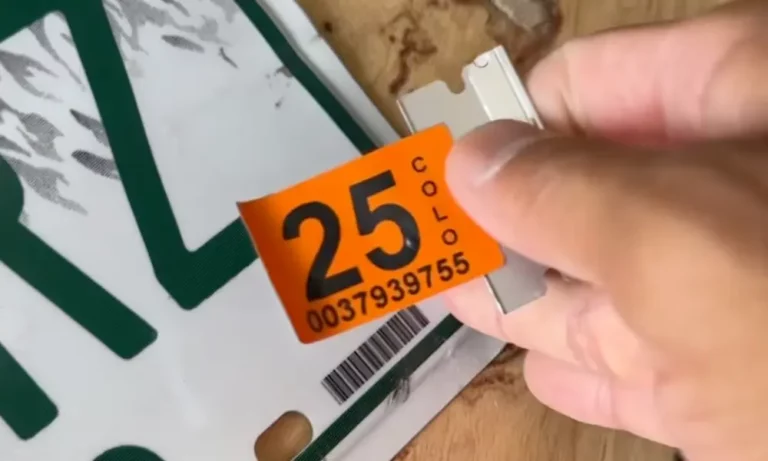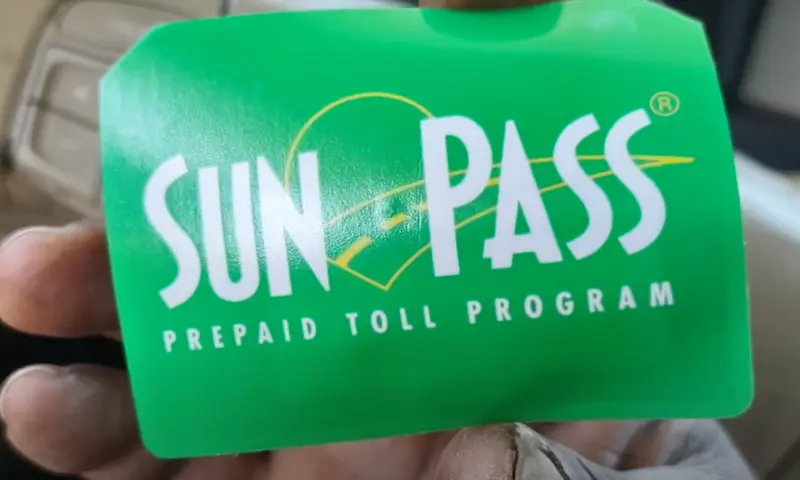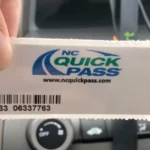Ever stared at your new registration sticker wondering exactly where it should go? You’re not the only one confused about this seemingly simple task. Putting your registration sticker in the wrong spot might seem trivial, but it can lead to tickets, failed inspections, or even accusations of improper vehicle registration. Let’s clear up the confusion once and for all.
Why Registration Sticker Placement Matters
Registration stickers aren’t just colorful decorations – they’re visual proof that your vehicle is legally registered. Proper placement ensures:
- Law enforcement can quickly verify your registration status
- You avoid unnecessary traffic stops
- Your vehicle passes inspection without hassle
- You maintain compliance with state-specific laws
Improper placement can result in tickets even if your registration is current. In Texas, for example, your sticker must be in the lower-left windshield corner – any other location constitutes a violation regardless of expiration status according to Texas Transportation Code §502.059(c).
License Plate Registration Sticker Placement
Most states require registration stickers on license plates, but the exact location varies by state.
Upper Right Corner Placement
In states like Florida, the upper-right corner is standard. Florida actually designs their plates with physical indentations to guide correct placement, which helps reduce placement errors and confusion for drivers.
If your state requires upper-right placement:
- Clean the surface thoroughly with alcohol
- Remove old stickers completely
- Apply the new sticker firmly to the upper-right corner
- Press from center outward to remove air bubbles
Lower Corner Placement
Iowa uses a more complex system based on plate size:
- Standard plates: lower-left positioning
- Small plates: upper-left corner
- Natural resource plates: lower-right corner
According to the Iowa Tax and Tags authority, stacking stickers (placing new ones on top of old ones) is explicitly prohibited. This differs from practices in other states.
State-by-State Plate Chart
| State | License Plate Sticker Position | Stacking Allowed? |
|---|---|---|
| Florida | Upper-right corner | Yes (indentation design) |
| Iowa | Varies by plate type | No |
| California | Upper-right corner | No (theft prevention) |
| Ohio | Between lower bolt holes | Yes |
| Wisconsin | Upper-right (except hybrid vehicles) | No |
Windshield Registration Sticker Placement
Some states require stickers on the windshield rather than license plates. This placement system has its own set of rules.
Lower Left Corner Placement
Texas and several other states require registration stickers in the lower-left corner of the windshield when viewed from inside the vehicle. This positioning keeps your line of sight clear while making the sticker visible to law enforcement.
For proper lower-left windshield placement:
- Clean inside windshield with glass cleaner
- Measure 2 inches up from the bottom edge
- Place sticker in the leftmost corner (driver’s side)
- Ensure the sticker is completely flat with no air bubbles
Behind Rearview Mirror
Virginia permits windshield stickers behind the rearview mirror if dimensions remain under 2.5″×4″, while maintaining traditional lower-right placement options according to Virginia Administrative Code.
This placement is less common but may be preferred if:
- Your vehicle has special windshield coatings
- The lower corners have defroster elements
- You have other required stickers that would overlap
Dual Sticker States
New York has one of the more complex systems, requiring:
- Inspection stickers in the lower-left windshield quadrant (when viewed from driver’s seat)
- Registration stickers placed immediately to their right
The New York DMV specifically prohibits placing stickers in a way that obstructs the vehicle identification number (VIN), which can be a challenge in compact vehicles.
How to Apply Registration Stickers Correctly
Proper application technique ensures your stickers stay put and remain legible.
Surface Preparation
Before applying:
- Clean the surface thoroughly (alcohol for metal plates, glass cleaner for windshields)
- Remove all remnants of old stickers
- Ensure the surface is completely dry
- Check for any damage that might prevent proper adhesion
Application Technique
For best results:
- Handle stickers by edges to avoid fingerprints on adhesive
- Peel backing partially and align sticker carefully
- Press from center outward to remove air bubbles
- Apply firm pressure across entire surface
- Wait 24 hours before washing vehicle or driving in heavy rain
Weather Considerations
Climate affects sticker durability:
- In hot climates like Arizona, standard adhesives can degrade within 9 months at temperatures reaching 120°F
- Minnesota’s -30°F winters cause acrylic brittleness and edge lifting
If you live in extreme climates, consider these tips:
- Apply stickers during moderate temperatures (65-75°F)
- Use a hairdryer on low setting to warm adhesive in cold weather
- Apply additional pressure in humid conditions
- Consider authorized protective overlays in extreme climates
Preventing Registration Sticker Theft
Sticker theft is unfortunately common in many areas. Some states have implemented specific anti-theft measures.
Anti-Theft Techniques
California employs a razor-scoring technique that makes stickers break apart if removed. According to 2023 statistics from the Los Angeles Police Department, this technique has reduced sticker thefts by 68%.
Other effective anti-theft methods include:
- Crosscut Method: After applying, make several light cuts across the sticker with a razor blade
- Clear Tape Overlay: Apply clear packing tape over the sticker (if permitted by your state)
- Security Fasteners: Use tamper-resistant hardware for license plates
Digital Alternatives
Some states are moving away from physical stickers entirely:
Pennsylvania eliminated physical registration stickers in 2023, transitioning to digital verification while maintaining windshield-mounted inspection decals. This change reduces theft concerns but requires drivers to understand the new system.
Common Registration Sticker Mistakes
Avoid these frequent errors that can lead to tickets or failed inspections.
Stacking Without Removal
While some states allow sticker stacking, many require complete removal of old stickers. Layering stickers can:
- Reduce adhesion by up to 37% according to Wisconsin DOT tests
- Create an uneven surface prone to peeling
- Make it difficult to verify current registration
Incorrect Placement Location
Placing stickers in the wrong location is the most common error:
- Right side instead of left side of windshield
- Passenger side rather than driver’s side
- Wrong corner of the license plate
- Too close to plate edges or mounting hardware
Always double-check your state’s specific requirements before applying.
Obstruction Issues
Make sure your sticker doesn’t obstruct:
- Vehicle identification number (VIN)
- License plate numbers or state identification
- Other required stickers or decals
- Plate mounting hardware
In New York, VIN obstruction is specifically prohibited and can result in a violation.
State-Specific Registration Sticker Requirements
Let’s look at some state-specific requirements in more detail.
California
California requires:
- Stickers on the upper-right corner of the rear license plate
- Complete removal of old stickers before applying new ones
- Special placement considerations for specialty plates
According to the California DMV, California’s 2019 reforms mandated theft-resistant registration stickers to address widespread registration fraud.
Texas
In Texas:
- Registration stickers must be placed on the inside of the windshield
- The sticker must be in the lower-left corner when viewed from inside
- Even if your registration is current, improper placement is a violation
- The sticker should be placed at least 2 inches from the bottom edge
New York
New York has one of the more complex systems:
- Registration stickers go in the lower-left quadrant
- Inspection stickers go immediately to the right
- Neither should obstruct the VIN
- Both must be clearly visible from outside
Pennsylvania
Pennsylvania has modernized their system:
- Physical registration stickers were eliminated in 2023
- Digital verification is now used for registration
- Windshield-mounted inspection decals are still required
- The Pennsylvania DOT recommends keeping registration documents in the vehicle
Moving Between States: Registration Sticker Transitions
When you move between states, you’ll need to navigate different registration sticker systems.
Transferring Registration
When moving to a new state:
- Check new state requirements before removing old stickers
- Register your vehicle in the new state within the required timeframe (typically 30-90 days)
- Remove old state stickers completely before applying new ones
- Be aware that some states may require temporary registration during the transition
Multi-State Vehicle Registration
If you have vehicles registered in different states:
- Keep track of different expiration dates and renewal requirements
- Note that each state will have its own placement rules
- Consider setting calendar reminders for each vehicle’s registration renewal
- Know that digital verification systems may not work across state lines
The Future of Vehicle Registration Stickers
Registration systems are evolving with technology.
Digital Registration Systems
As demonstrated by Pennsylvania’s paperless registration system, digital verification is becoming more common. While this reduces physical sticker needs, it can increase traffic stop durations by about 22 seconds during verification checks.
Smart Sticker Technology
3M is developing NFC-enabled registration stickers (with a planned 2026 rollout) that will enable smartphone verification while maintaining visual compliance. Early prototypes store encrypted VIN and registration data that can be read by law enforcement through standardized apps.
How to Fix Registration Sticker Mistakes
Made a placement error? Here’s how to correct it.
Removing and Relocating
If you’ve placed your sticker incorrectly:
- Contact your DMV immediately to report the error
- Some states offer replacement stickers (usually for a fee)
- Document the situation with photos in case you’re stopped
- Never attempt to remove and reuse a sticker – they’re designed to tear when removed
Replacement Options
If your sticker is damaged or improperly placed:
- Visit your local DMV office
- Bring vehicle registration documents and ID
- Explain the situation truthfully
- Be prepared to pay a replacement fee
- Some states allow online requests for replacement stickers
The California DMV offers a specific process for stickers placed on the wrong vehicle or in the wrong location.
Temporary Registration Considerations
Waiting for your permanent registration? Here’s what to know about temporary tags.
Temporary Tag Placement
Temporary registration tags typically:
- Must be displayed in the rear window or where the license plate would normally go
- Should be fully visible and unobstructed
- Must be protected from weather damage
- Cannot be altered or laminated unless specifically permitted
Transition to Permanent Registration
When moving from temporary to permanent registration:
- Remove temporary tags completely
- Apply permanent stickers according to state guidelines
- Keep documentation of both temporary and permanent registration
- Be aware of expiration dates to avoid gaps in legal registration
When Registration Stickers Aren’t Required
Some vehicles and jurisdictions don’t require traditional registration stickers.
Exempt Vehicles
Vehicles that may be exempt from standard registration sticker requirements include:
- Historic or collector vehicles in some states
- Certain government and military vehicles
- Farm equipment in many jurisdictions
- Some low-speed or neighborhood electric vehicles
Digital-Only Jurisdictions
As mentioned earlier, Pennsylvania has eliminated registration stickers entirely. Other states like Rhode Island and Maine are experimenting with digital verification systems that may eventually replace physical stickers altogether.
Remember, proper registration sticker placement might seem minor, but it’s an important part of keeping your vehicle legal on the road. When in doubt, check your state’s DMV website for the most up-to-date requirements and placement instructions.
















